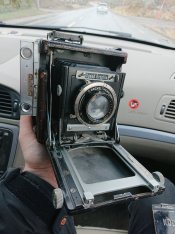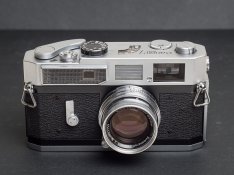I'm not an FTn expert, but I suspect this is because the camera is metering at wide open (viewing aperture), and needs to know what that is to calculate the correct exposure for the set aperture from the light it sees wide open. In other words, to tell you correct shutter for f/8 based on the light it reads at f/1.7, it needs to know it's at f/1.7. Otherwise, it only knows the correct shutter speed for "whatever aperture you're at right now."
Well, yeah, but because exposure stops are a mathematically constant unit, and because the camera is metering through the lens, the exact maximum aperture is not entirely necessary to know, and the minimum aperture is certainly not necessary to know.
The Minolta Sr-T system is a great example. I'm sure you've examined one, possibly even owned one, but if you haven't, it works like this: There's a sensor ring around the lens mount, and a tab on the aperture ring that presses a tab on the sensor ring. The position of this ring corresponds not to the absolute aperture the lens is set to, but the difference between whatever the maximum aperture is and the current setting, in terms of f/stops.
Because the camera is presumed to be metering wide-open and
through the lens, it doesn't matter what the actual numbers are, as long as the difference between maximum aperture and current aperture, shutter speed and film speed are all factored in to the meter's calculation. In practice, the
relative aperture value, the shutter speed and the film speed are computed together to give an exposure value, indicated by a "lollipop" needle, which is compared to a meter needle that just displays the light value coming through the wide-open lens, irrespective of film speed, current aperture or shutter speed. It's counter-intuitive, to me at least, but it works great in practice. Some OEM zoom lenses made especially for this system have special mechanisms that cause the aperture to close slightly when the lens is set to a short focal length, to keep the effective maximum aperture constant. It'd be nice if they were also up to par with the prime lenses, but that's entirely too much to ask from a 70's zoom lens.
Knowing that the Minolta system works, what is the benefit of the Nikon system, where the maximum and minimum apertures are entered into the camera? It's just going to meter
through the lens at maximum aperture anyways, so it knows that stuff to the extent that it needs to.








